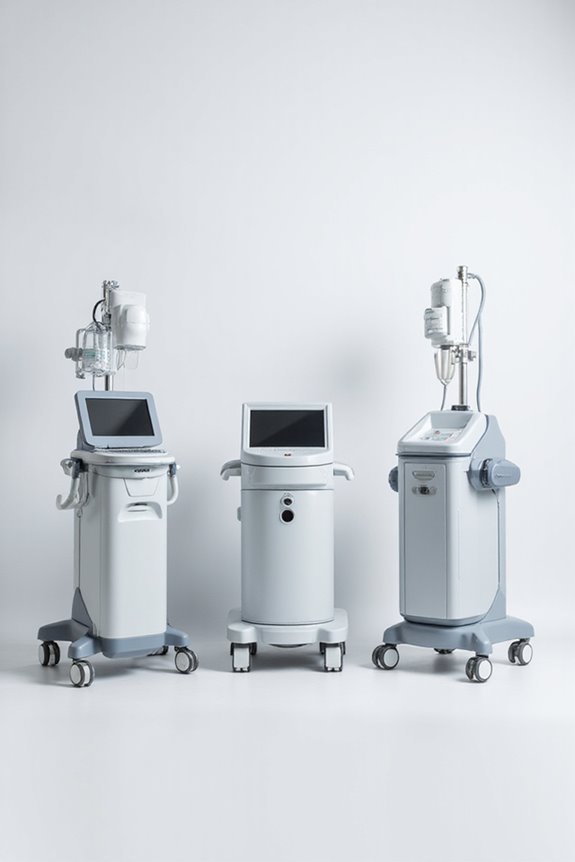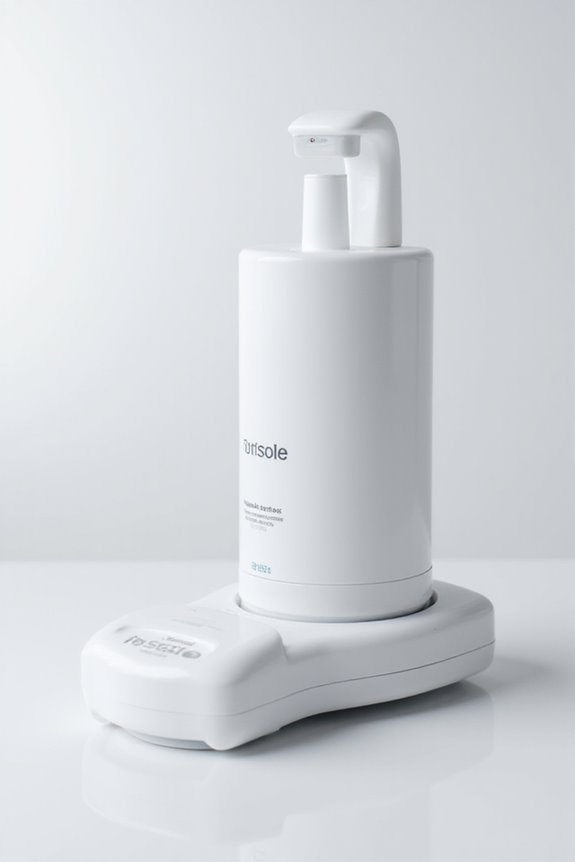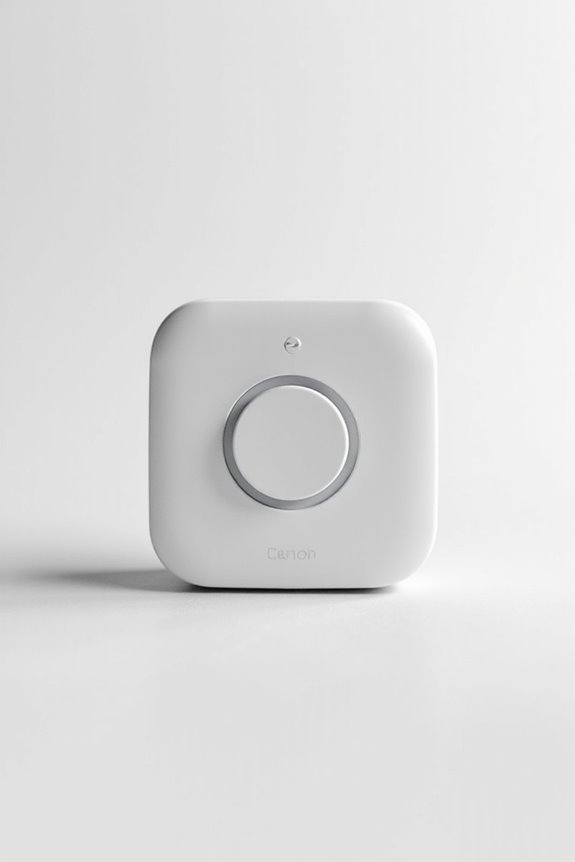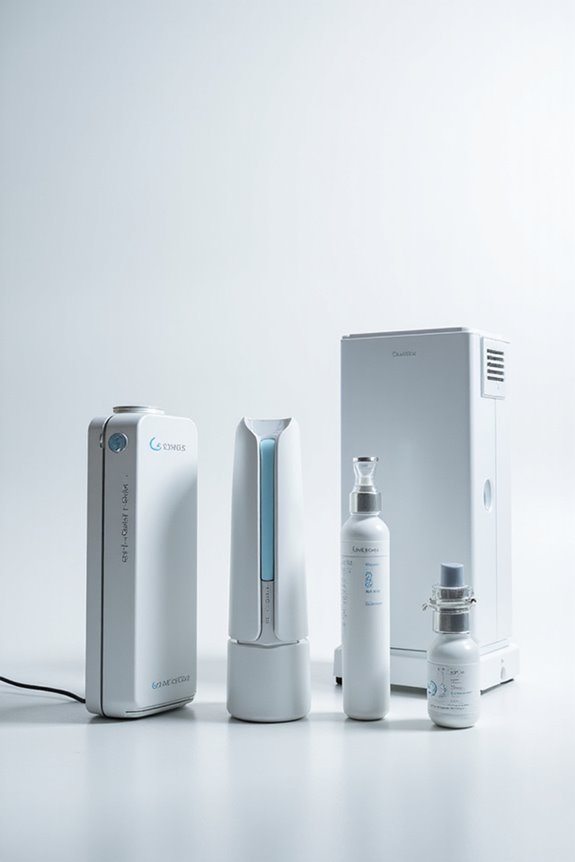Links below are affiliate links. We earn a commission on purchases at no extra cost to you. Although our opinions are based on curated research, we haven't used these products. Articles generated with AI. This article is for informational purposes only and does not constitute medical advice. Please consult a qualified professional for health-related questions.
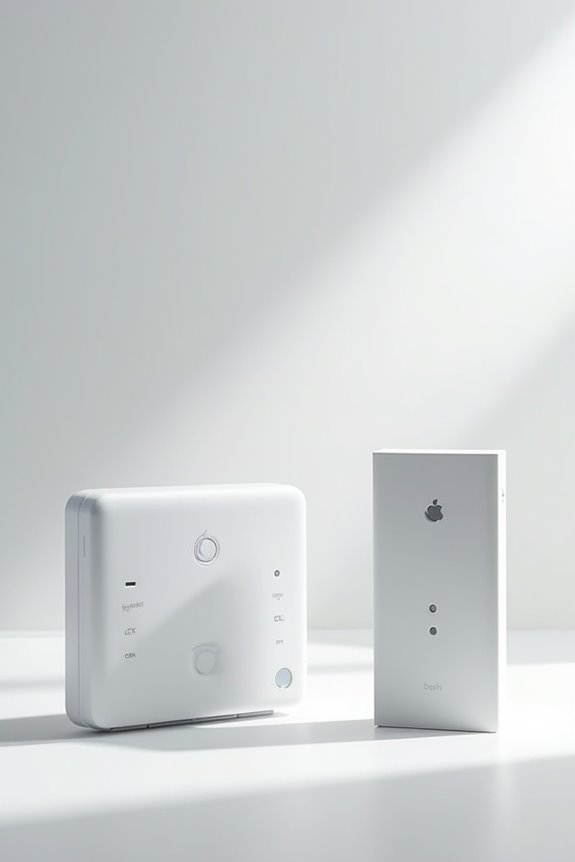
3 Best Senior Alert Systems to Keep Your Loved Ones Safe and Secure
For effective senior alert systems, consider these top three options:
- CallToU Caregiver Pager: Waterproof, over 500-foot range, customizable sounds, and high user ratings (4.6 stars).
- Freedom Alert Landline Device: Direct emergency access via a two-way pendant, lasts 30 days per charge, and compatible with landlines.
- Daytech Wireless Caregiver Pager: Multiple SOS buttons, user-friendly design with adjustable volume, and a 500-foot range.
Each system offers unique features tailored for safety and ease of use, revealing more considerations as you compare their capabilities.
Key Takeaways
- The CallToU Caregiver Pager offers a waterproof design, a range of over 500 feet, and customizable alerts for immediate assistance.
- Freedom Alert Landline Device features a two-way pendant for direct communication and a rechargeable battery lasting up to 30 days.
- Daytech Wireless Caregiver Pager includes two SOS buttons and pagers, ensuring reliability with an adjustable volume and easy usability.
- All systems enhance safety with customizable ringtones, visual indicators, and backup battery options for reliability during emergencies.
- User-friendly designs and simple interfaces make these alert systems accessible and straightforward for elderly users.
CallToU Caregiver Pager Wireless Call Button Alert System
CallToU Caregiver Pager Wireless Call Button Nurse Alert System 500+ Feet for...
- [ Wireless Guard ] 1 Receiver 1 Call Button. Allow caregivers and residents to be free while ensuring that help is still available at the touch of a button, ideal for...
- [ Easy to Carry ] The receiver can be moved with the caregiver and the open area working range is 500+ ft, you can take it to the bedroom, kitchen or living area(receiver...
- [ Smart Ringtones ] The receiver of caregiver pager has 55 ringing tones to choose from and 5 level adjustable volume from 0db to 110db. Easy use by plug the receiver...
The CallToU Caregiver Pager Wireless Call Button Alert System is an ideal choice for elderly individuals, patients, and disabled users who require immediate assistance.
Overview
- Components: 1 plugin receiver, 1 waterproof transmitter
- Range: Over 500 feet
- Design: Waterproof and dustproof
Features
- Versatile Receiver: Easily moveable for different areas (bedroom, kitchen, yard)
- Wearable Call Button: Can be worn as a pendant or secured with a bracket
- Sound Options: 55 ringtones, 5 volume levels (0dB to 110dB)
Feedback
- Ratings: Average of 4.6 stars from 4,690 ratings
- Strengths: Users highlight range, loudness, and usability.
Best For: The CallToU Caregiver Pager Wireless Call Button Alert System is best for elderly individuals, patients, and disabled users who require immediate assistance from caregivers.
Pros:
- Convenient waterproof and dustproof design for various environments.
- Wide range of over 500 feet, allowing flexibility in movement.
- Customizable with 55 ringtones and 5 volume levels for tailored alerts.
Cons:
- Some users suggest the addition of a flashing light feature for the hearing impaired.
- Limited battery life for the transmitter may require regular replacements.
- The product may not be suitable for those unfamiliar with technology or setup processes.
Freedom Alert Landline Personal Emergency Device for Home Safety
Sale
LogicMark Freedom Alert, Landline Personal Emergency Device, 2-Way Call with Family and Police for...
- 𝐀𝐓 𝐇𝐎𝐌𝐄 𝐏𝐑𝐎𝐓𝐄𝐂𝐓𝐈𝐎𝐍: You'll have peace of mind with this 2-way safety device that allows you to connect with 911...
- 𝐋𝐀𝐍𝐃𝐋𝐈𝐍𝐄 𝐑𝐄𝐐𝐔𝐈𝐑𝐄𝐃: This at home device for seniors or those with a handicap uses your existing landline phone service to...
- 𝐓𝐖𝐎 𝐖𝐀𝐘 𝐏𝐄𝐍𝐃𝐀𝐍𝐓: This Two-Way Voice Communication Pendant allows you to have full communication with loved ones or emergency...
For seniors seeking an effective emergency response solution, the Freedom Alert Landline Personal Emergency Device stands out due to its reliable 2-way communication capabilities.
Key Features
- Direct connection: Easily reach family or emergency services with a single button press.
- Landline compatibility: Works with existing landlines and VOIP services.
- Two-way pendant: Built-in microphone and speaker allow direct communication.
- Rechargeable: Lasts up to 30 days; includes backup battery.
Cost and Accessibility
- No monthly fees: Suitable for fixed incomes.
- Custom call sequence: Program the order of family calls before contacting 911.
User Experience
– Users report straightforward setup and excellent call quality.
Best For: Seniors and elderly individuals seeking a reliable and easy-to-use emergency response solution for at-home safety.
Pros:
- No monthly fees: Affordable option ideal for users on fixed incomes.
- Easy communication: Quick one-button access to family and emergency services.
- Rechargeable battery: Long-lasting battery life with backup power for reliability.
Cons:
- Range limitations: Actual effective range may be less than advertised, at approximately 100 yards.
- Initial setup: May require careful following of instructions and some testing.
- Potential issues: Some users experienced problems with battery reliability and accidental 911 calls.
Daytech Wireless Caregiver Pager Alert System for Elderly Monitoring
Daytech Wireless Caregiver Pager Call Button Elderly Nurse Alert System for Elderly...
- STAY MORE INDEPENDENT AND IN CONTROL: When you or a loved one needs more assistance due to aging or health conditions, it’s normal to feel dependent and uncomfortable....
- GET HELP QUICKLY & EFFICIENTLY: When assistance is needed, a simple press of the panic button or watch pager sends an alert directly to the caregiver’s pager receiver....
- ANYONE CAN OPERATE IT: Even with limited function in the hands, a person will be able to press the watch pager or the call bell button to ask for help. The included neck...
- Features: This system includes two SOS call buttons and two watch pagers, offering a maximum range of over 500 feet. It’s suitable for various settings: private households, hospitals, and nursing homes.
- User-Friendly: Designed for easy operation, the call button accommodates limited hand function and includes a neck strap. It’s splash-proof but should be removed before bathing.
- Customization: The system is ready-to-use with customizable settings, including 20 ringtones and adjustable volume.
- Reliability: Designed for 24/7 reliability, it includes a year’s warranty and has positive customer feedback.
Best For: This product is best for elderly individuals who require assistance and caregivers looking for an effective communication tool in various settings such as homes, hospitals, and nursing homes.
Pros:
- User-Friendly: Designed for easy operation, particularly for those with limited hand function.
- Customizable Settings: Offers 20 ringtones and adjustable volume for personalized use.
- Reliable Performance: Features 24/7 reliability with positive customer feedback and a one-year warranty.
Cons:
- Splash-Proof Limitations: While splash-proof, the call button must be removed before bathing, which may be inconvenient.
- Range Limitations: Maximum effective range is approximately 500 feet, which may be restrictive in larger settings.
- Battery Dependence: Requires batteries for operation, which can lead to outages if not monitored frequently.
Factors to Consider When Choosing a Senior Alert System
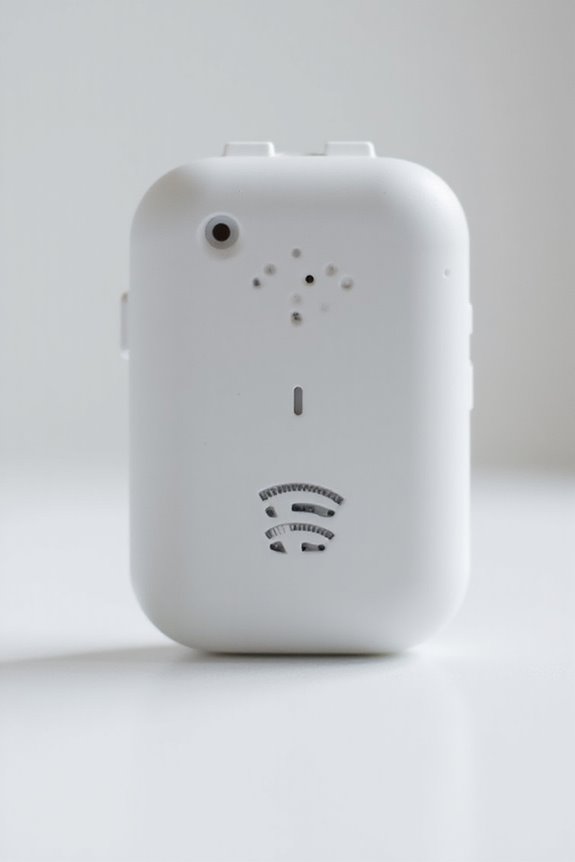
When selecting a senior alert system, it’s crucial to take into account several critical factors. You should evaluate the range and connectivity options to guarantee reliable communication, understand the ease of use for both seniors and caregivers, and check for two-way communication features. Additionally, examine customization options, battery life, and backup systems to guarantee uninterrupted service.
Range and Connectivity
Range and connectivity are essential factors to evaluate in selecting a senior alert system.
- Effective Range: Many systems offer coverage that exceeds 500 feet, ensuring functionality in larger homes and yards.
- Environmental Performance: Check the device’s capability to operate effectively indoors, outdoors, and through obstacles like walls.
- Connection Requirements: Some systems may depend on a landline or specific network compatibility, which could limit usability in homes lacking traditional phone services.
- Reliability: Consider the battery life and the ability to function during power outages, so backup options are essential.
- Flexibility: Assess whether the system supports multiple transmitters or receivers, allowing use across different home areas or for multiple caregivers.
Ease of Use
How does the ease of use impact the effectiveness of a senior alert system?
A straightforward setup is essential. Look for systems with:
- Plug-and-play receivers: Make certain seniors can operate devices without technical issues.
- User-friendly call buttons: Options like pendants or brackets allow quick access in emergencies.
- Adjustable volume levels: Customize sound and ringtone preferences to fit the user’s hearing abilities.
Additionally, consider:
- Large buttons or wearable options: Ideal for seniors with limited hand function.
- Customer support: Availability of assistance and user manuals can help troubleshoot problems effectively.
These factors greatly enhance user experience, guaranteeing seniors feel secure and can respond appropriately during emergencies. A system’s ease of use directly influences the effectiveness of its emergency response capabilities.
Two-Way Communication
Two-way communication is a critical feature to contemplate in a senior alert system, as it enables immediate interaction between users and emergency responders or family members.
Key aspects include:
- Direct Communication: Seniors can speak directly to family or emergency services, enhancing response times in urgent situations.
- Accessibility: Devices with built-in microphones and speakers allow for clear communication without needing proximity to a phone.
- Compatibility: Many systems utilize existing landlines or VOIP services, ensuring they fit standard home configurations.
- Programmable Call Sequences: Customizable features let users contact family members before activating emergency services.
- Reliability and Clarity: High-quality two-way devices are essential for effective emergency communication, ensuring accurate message delivery when it matters most.
Customization Options
Customization options are an essential consideration when selecting a senior alert system, as they allow the device to fit individual needs and preferences. Here are key factors to evaluate:
- Multiple Receivers and Transmitters: Guarantee the system accommodates various needs within a home or care facility.
- Customizable Ringtones: Look for systems offering an array of sounds—up to 20 options—to enhance user experience.
- Adjustable Volume Settings: Ideal systems provide volume ranges up to 110 dB, catering to individual hearing preferences.
- Call Sequence Programming: This feature allows users to customize the order of alerts to family members or emergency contacts.
- Easy Factory Settings: Select devices that offer straightforward default settings, along with options for personal adjustments.
Assess these customization options to enhance safety effectively.
Battery Life and Backup
When evaluating a senior alert system, battery life and backup options are critical factors that can greatly impact reliability.
- Battery Longevity: Opt for systems with long-lasting batteries to minimize replacements, ensuring consistent operation. Rechargeable batteries that last around 30 days per charge are highly recommended.
- Backup Features: Verify if the system includes a backup battery. This guarantees functionality during power outages or primary battery failures.
- Battery Requirements: Different systems may utilize varying numbers of batteries. Understanding these requirements can inform your maintenance routine.
- Low Battery Alerts: Look for systems equipped with low battery indicators. These alerts notify you or caregivers of necessary replacements, enhancing overall peace of mind.
Prioritizing these factors can greatly contribute to a reliable alert system.
Frequently Asked Questions
How Much Do Senior Alert Systems Typically Cost?
When looking at senior alert systems, you’ll find a variety of price points. Generally, costs range from $20 to $60 monthly, depending on features and service levels.
Key Factors Affecting Cost:
- Type of System: Mobile vs. in-home systems.
- Features: GPS tracking, fall detection, and emergency response.
- Contracts: Month-to-month vs. long-term agreements.
It’s essential to assess your needs before making a decision.
Are Senior Alert Systems Covered by Insurance?
Senior alert systems may or may not be covered by insurance.
Insurance Coverage Overview:
- Medicare: Typically does not cover personal alert systems.
- Medicaid: May provide limited coverage, depending on state regulations.
- Private Insurers: Some policies might reimburse costs, but verification is needed.
Always check with your insurance provider regarding specific coverage details. Documentation proving the need for the alert system can assist in claims or reimbursements.
What Is the Average Battery Life of These Devices?
The average battery life of senior alert devices varies greatly, often resembling the reliable ebb and flow of a tide.
- Most devices offer a battery life of 1 to 3 years.
- Rechargeable models may last 24 to 48 hours on a full charge.
- Battery life depends on usage frequency and device type.
Regular testing and maintenance can help guarantee peak performance, allowing you to stay informed and proactive about your loved one’s safety.
Can Seniors Wear These Systems Outside the Home?
Yes, seniors can wear these alert systems outside the home.
- Portability: Many devices are designed for mobility and include lightweight, portable features.
- GPS Tracking: Most systems come equipped with GPS, enabling location tracking.
- Battery Life: Verify the device has sufficient battery life for outdoor use.
Always check specifications before purchasing to confirm that the product meets mobility needs and offers the necessary safety features when away from home.
Are There Any Monthly Fees Associated With These Systems?
Yes, many alert systems involve monthly fees. Here’s what you need to know:
- Typical Costs: Fees can range from $20 to $60 monthly.
- Additional Charges: Some providers may charge activation fees or equipment costs.
- Service Plans: Basic plans may cover monitoring; advanced features could increase your monthly bill.
It’s essential to review the specific terms and conditions of each system to understand all associated costs before making a commitment.




